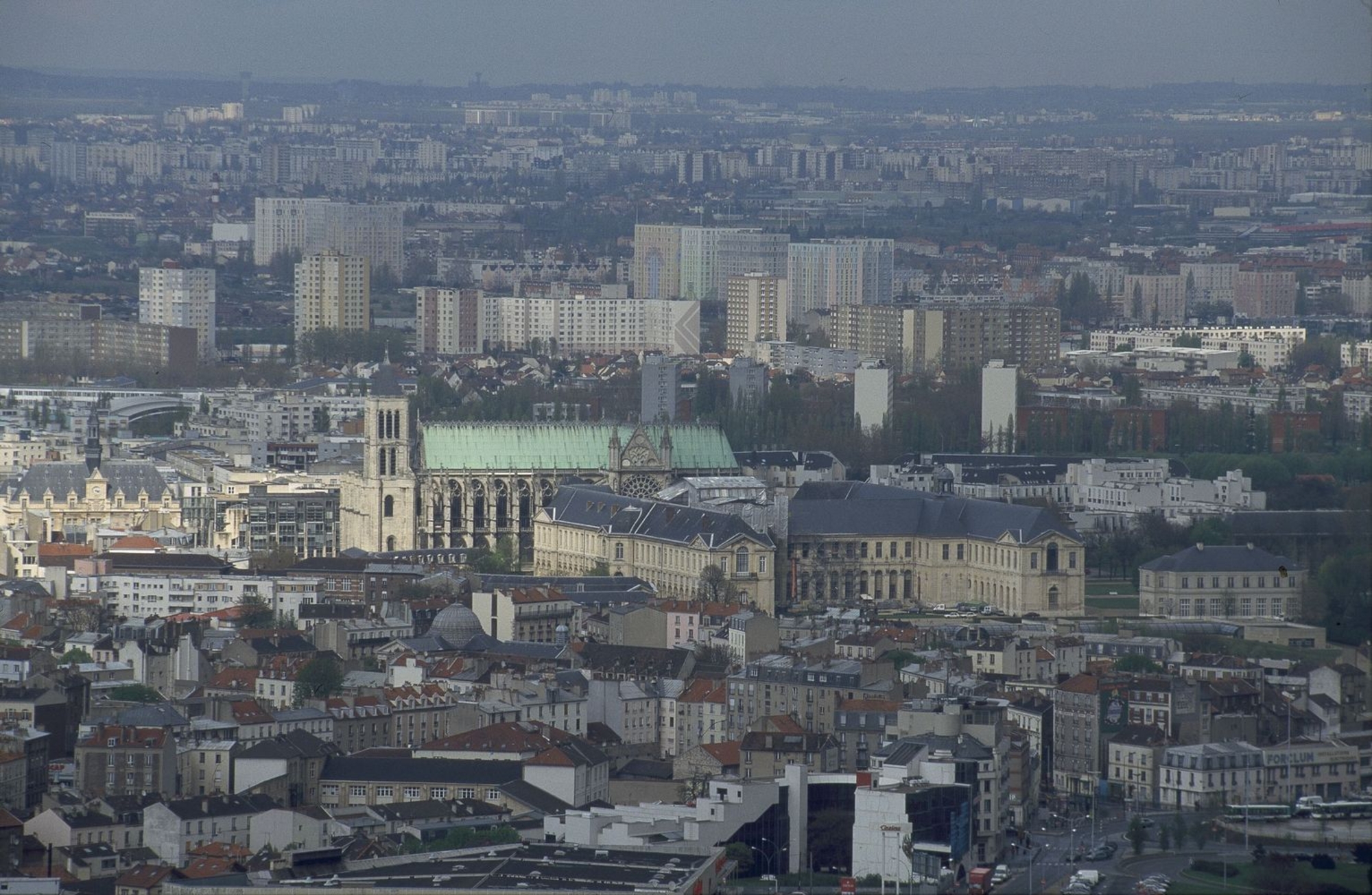- Home
- The town and the abbey
- From the industrial town to the town of today
- The town today and its permutations
- The gasometers
Aerial view of the gasometers at the site of the gas-works, 1972.
© J. Richard.
In 1882, the decision was made to construct a gasworks at Saint-Denis in order to meet Paris' growing needs for gas for both light and heating. Town-gas was produced by distilling coal, and thus the plant depended heavily on the railways and coal trains coming from the mines in the north of France. After firing and purification, the gas was stored in telescoping gasometers that rose and fell in function of the quantity of gas they contained. For several decades, these "huge riveted iron bells"-the largest of which were 65 metres high and 75 metres in diameter-were features of the La Plaine landscape.
The plant employed several hundred workers from Brittany, whose unskilled jobs were carried out under difficult conditions. In 1946, the newly-nationalized Gaz de France took over the production, transportation and distribution of gas in Paris and, as a result, the management of the plant. In the 1970s, distribution of natural gas became the norm throughout the Ile-de-France, leading to the shutdown of the plant. Today, the site is home to Gaz de France's research center, as well as the Stade de France.

